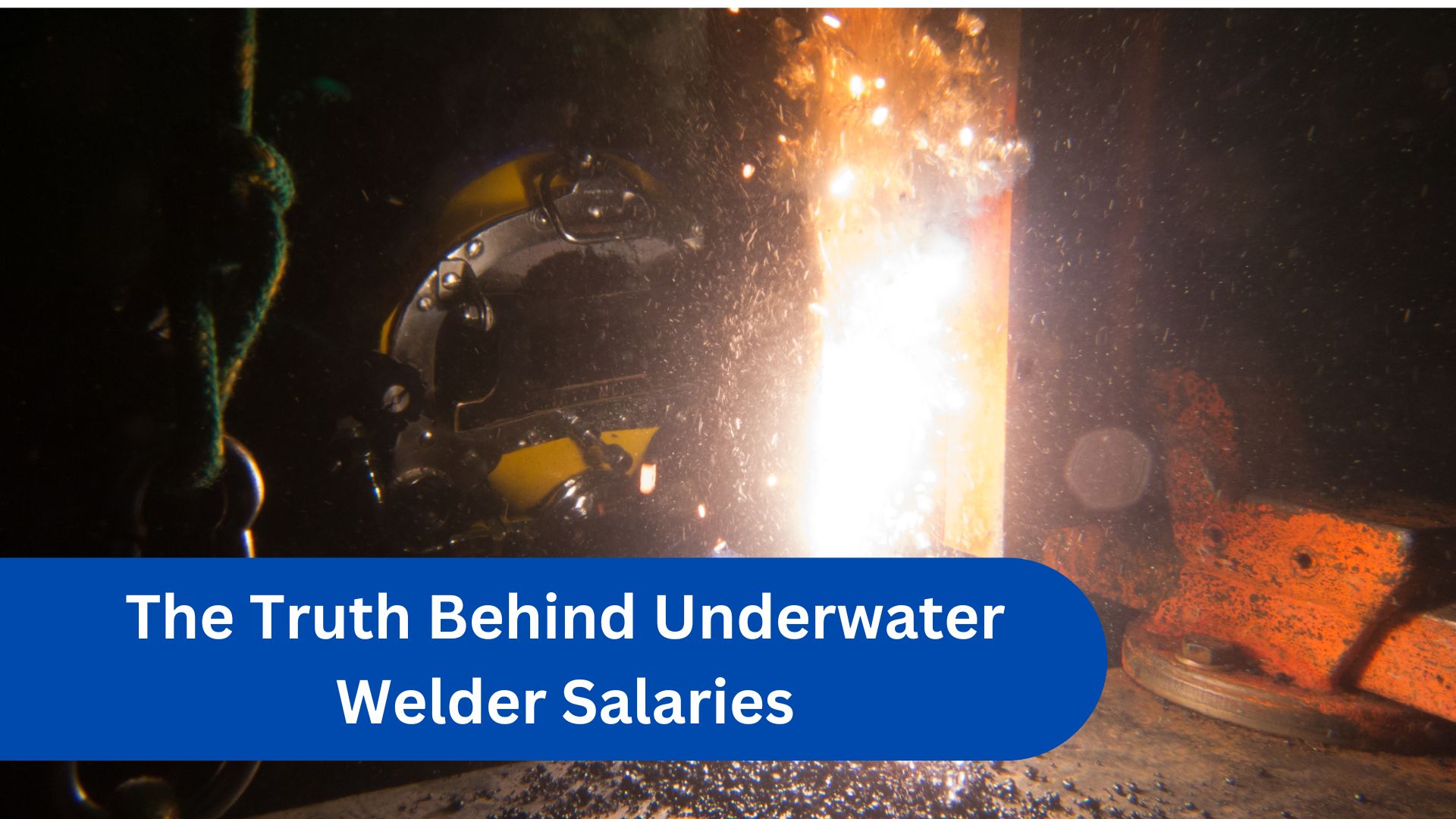Let’s Uncover the Truth Behind Underwater Welder Salaries
Underwater welder salaries have long captured the imagination of adventurous job seekers. With tales of six-figure paychecks and adrenaline-pumping work beneath the waves, it’s no surprise this career often tops “high-paying trade job” lists. But is the money really that good? And what’s the catch?
Let’s dive into the truth behind underwater welding salaries—what you can expect, what factors affect your earnings, and whether the job is worth the hype.
How Much Do Underwater Welders Actually Make?
The average underwater welder salary in the U.S. ranges from $50,000 to $100,000 per year, depending on experience, location, and the type of projects. According to the U.S. Bureau of Labor Statistics (BLS), commercial divers—including underwater welders—earn a median annual salary of around $60,000, but experienced deep-sea welders can earn well over $150,000 in specialized offshore projects.
Key salary ranges:
-
Entry-level: $40,000–$60,000/year
-
Mid-level (3–5 years): $60,000–$90,000/year
-
Senior/Offshore deep-sea welders: $100,000–$200,000/year
Some elite underwater welders who work in hazardous offshore conditions—like oil rigs or emergency ship repairs—can earn $1,000+ per day, but these gigs are rare and extremely demanding.
Why Such a Wide Salary Range?
The truth is, underwater welder salaries aren’t as simple as clocking in and out. Your pay depends on several critical factors:
1. Type of Welding Work
-
Offshore jobs (oil rigs, pipelines) pay the most due to risk and remoteness.
-
Inland jobs (bridges, dams) are more stable but offer lower pay.
2. Depth and Hazard Pay
Welders who work at great depths or in hazardous conditions often receive depth pay, dive pay, and hazard bonuses.
Example: A commercial diver performing wet welding at 200 feet deep can receive thousands in bonus pay on top of their base rate.
3. Experience and Certifications
-
More certifications (like AWS D3.6 or IMCA) = higher earning potential.
-
Divers with a solid track record are preferred for high-paying jobs.
4. Union vs. Non-Union Work
Unionized divers often have better wages, benefits, and protections—but competition for these roles is fierce.
How Dangerous Is Underwater Welding?
Here’s the part they don’t always tell you: underwater welding is one of the most dangerous jobs in the world.
According to multiple safety reports, the fatality rate for underwater welders can be up to 40 times higher than other occupations.
The dangers include:
-
Electrocution
-
Decompression sickness (the bends)
-
Drowning
-
Explosions from pressurized gases
This risk is one reason underwater welder salaries can be so high—you’re getting paid to work in one of the harshest environments imaginable.
Is It Worth It?
If you’re looking for a job that’s challenging, well-paid, and far from ordinary, underwater welding might be a dream gig. But if you’re in it just for the paycheck, think twice. The physical and mental toll, not to mention time away from home, can be intense.
“You earn every dollar,” says a former offshore welder on Reddit. “The money’s good, but you’ve got to love the grind.”
Who Employs Underwater Welders?
Underwater welders work across a range of industries that require submerged structural maintenance, repair, or construction. The majority of employment opportunities are tied to industrial, energy, and infrastructure projects where land-based welding simply isn’t an option.
Here are the most common employers of underwater welders:
1. Oil and Gas Companies
The offshore oil and gas sector is the largest employer of underwater welders. These welders handle:
-
Maintenance of underwater pipelines and rigs
-
Emergency repairs on subsea structures
-
Construction of deep-sea platforms
Major employers include: Shell, Chevron, BP, Transocean, and Halliburton (often through third-party contractors).
2. Maritime Shipping and Shipbuilding
Large vessels, including military ships and commercial cargo carriers, require regular underwater maintenance to stay seaworthy. Welders may be hired by:
-
Shipbuilding companies
-
Dry dock facilities
-
Port authorities
-
Naval defense contractors
3. Construction and Infrastructure Firms
Onshore or “inland” underwater welders often work for civil engineering firms that build or maintain:
-
Bridges and tunnels
-
Dams and reservoirs
-
Ports and harbors
-
Water treatment plants
These jobs usually involve lower risk compared to offshore work, but they also pay less.
4. Specialized Commercial Diving Contractors
Many underwater welders work for diving services companies that subcontract talent to large corporations or governments. These companies provide certified commercial divers for various projects, including:
-
Salvage operations
-
Inspections
-
Demolition
-
Underwater cutting and welding
Examples: Subsea Global Solutions, Oceaneering, and Phoenix International.
5. Military and Government Agencies
The military (especially the U.S. Navy or Coast Guard) and government agencies sometimes hire underwater welders for:
-
Submarine repairs
-
Naval base infrastructure
-
Emergency recovery missions
Some welders begin their careers in the military and transition to private-sector jobs after gaining experience.
How to Become an Underwater Welder
Underwater welding is not an entry-level profession—you’ll need a mix of technical training, certifications, and physical conditioning. It’s a specialized career path that combines welding skills with commercial diving expertise.
Here’s a step-by-step breakdown of how to become an underwater welder:
1. Finish High School or Get a GED
A high school diploma or equivalent is the first requirement. Courses in math, physics, and shop class can give you a helpful head start.
2. Become a Certified Welder
Before you ever enter the water, you need to master topside (land-based) welding. You’ll need:
-
Hands-on welding training from a vocational school or technical college
-
Certification through organizations like the American Welding Society (AWS)
Expect to learn MIG, TIG, and stick welding—skills that will later be adapted for wet conditions.
3. Get Commercial Diving Training
Once you’re a solid welder, enroll in a commercial diving school. This is where you’ll learn:
-
Underwater welding techniques
-
Diving physics and safety
-
Decompression procedures
-
Equipment maintenance
Some well-known diving schools in the U.S. include:
-
Divers Institute of Technology (Seattle, WA)
-
The Ocean Corporation (Houston, TX)
-
International Diving Institute (North Charleston, SC)
Courses can take 6 months to a year and cost between $15,000–$30,000.
4. Earn Industry Certifications
To land jobs and improve your salary, you’ll likely need:
-
ADC (Association of Diving Contractors) certification
-
TWIC card (Transportation Worker Identification Credential) for offshore work
-
Additional safety and welding tests depending on the employer
5. Gain Experience and Build a Reputation
Most new underwater welders start as tenders or dive assistants to gain experience and trust. Over time, with proven skill and reliability, you’ll get higher-paying assignments in:
-
Offshore oil rigs
-
Ship repair yards
-
Bridge or dam projects
Optional: Specialize or Upgrade Certifications
With time, you can:
-
Move into nondestructive testing (NDT)
-
Get certified in hyperbaric welding
-
Work internationally by securing IMCA-recognized credentials
Final Verdict: The Truth About Underwater Welder Salaries
Yes, underwater welder salaries can be lucrative—but it comes with risk, unpredictability, and a lifestyle that isn’t for everyone. Most underwater welders make solid money, but only a few hit the six-figure mark consistently, and usually at the cost of comfort and safety.
TL;DR:
-
Most earn between $50K and $100K
-
Offshore jobs pay the most
-
Danger pay and certifications boost income
-
The job is high-risk, high-reward
If you’re considering this path, research diving schools, get certified, and talk to pros in the field. It’s a tough but rewarding ride for those who are truly cut out for it.




